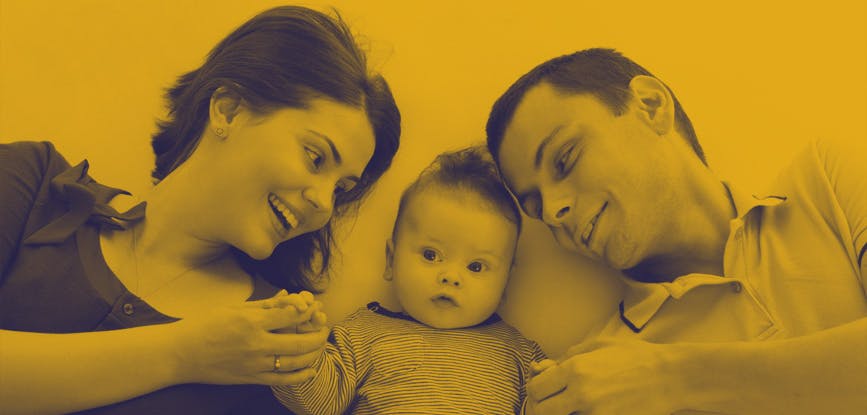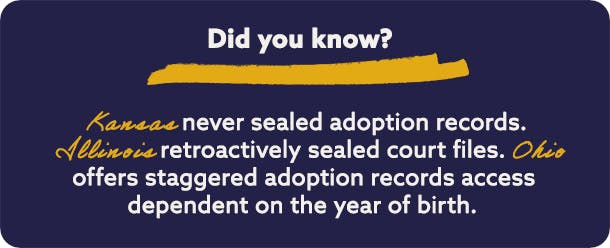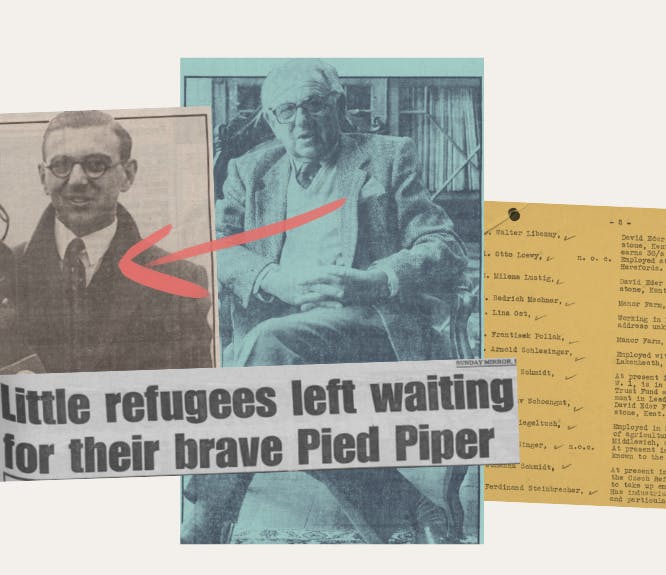How to find adoption records and use them in your genealogy research
6-7 minute read
By Guest Author | February 22, 2021

When it comes to researching someone who was adopted in your family tree, you may need to think outside the box. Genealogist Debbie Mieszala explains.
Adoption questions involve family history topics and records beyond a typical genealogical search.
When undertaking a post-adoption search, it's important to understand the types of records created during the course of an adoption. It's imperative to be aware of state and federal laws in place at the time of the event, and also at the time of your search. Your knowledge of access laws, which do vary by state, arms you as a genealogist in case access is wrongfully denied.
Tips to start your adoption search
To undertake an adoption search, first gather information from home sources, including interviews with extended family members. Determine if adoption records are open or closed, and request the original birth certificate and court documents, if allowed. If the state has an adoption registry or medical information exchange program, sign up. Some states will also give non-identifying information from the original birth certificate (OBC).
- You may request non-identifying information from the agency or court supportive services.
- Check for orphanage records.
- In the case of Roman Catholic adoptions, ask for baptismal information.
- Sacramental records are available to involved parties and sometimes contain identifying information on birth family members.
- If the birth mother lived at a maternity home, check for records. Ask the hospital for personal medical information.
- Make timelines for all family members on an online family tree. Note locations, ages, and other identifiers, and as new information arrives, add it to the timelines.
- Expect to pay fees

In the end, you must prepare for any outcome. The best outcomes for adoption searches in your family history are those that are mutually-agreed upon, so don't forget that flexibility goes a long way.
Where to find adoption records
Before an adoption, several planning steps have usually been taken and produce specific adoption records.
Records were created if a birth mother lived in a maternity home. A maternity home, girls’ home, or work home was a place for pregnant women to live and sometimes work. Many unmarried women were sent away from home during their pregnancies to avoid a hometown’s prying eyes. Check local and state historical societies and archives to see if maternity home records are preserved.
Was the adoption arranged privately or through an agency? Did the agency have a religious affiliation? Were children housed in an orphanage?
The court process produces a variety of records. Depending on marital status and laws in place at the time, the birth mother and possibly the birth father had to legally surrender parental rights. Here are a few records that are helpful with searching for cases of adoption in your family history.
Medical records
Privately-arranged adoptions were often facilitated by physicians and/or attorneys. Records of doctors and lawyers are confidential. The attorney that worked on an adoption might review a letter that a genealogist hopes to have forwarded to a former client.
Hospitals often retain birth registers and occasionally have medical information on children born there. Medical records regarding the person you are searching for may sometimes be obtained.
An adoption agency may undertake a search for a fee. If a specified triad member inquires and a letter is waiting for them, that letter will be shared. Many agencies accept letters from family members to place in the adoption file.
Home studies for adoption
Families seeking to adopt underwent a home study. Home investigations were considered as early as the 1910s in some states, and by the mid-twentieth century in many states. Records were created when the adoptive family was originally visited and interviewed.
At that point, social and financial information was collected, and the family assessed for potential placement. That information is private, but home studies included birth family information gathered during the birth mother’s interview.
Information gathered might include her ethnic background, religion, health, family situation, siblings, talents, education, occupation (hers and her parents’), and interests. Known medical issues and immediate family members’ causes of death were documented. Agencies often gathered similar information on birth fathers.
Many state laws permit non-identifying home study information to be released. Eligible adoptees should request non-identifying birth family information to obtain social and other background data. Some agencies send a child’s photograph. Catholic agencies might offer sacramental information.
In privately-arranged adoptions, home studies may have been done by a rabbi, priest, doctor, lawyer, or court supportive services. In state-arranged placements, check with the county’s court supportive services department or state’s child welfare agency.
Birth certificates for adoption
An original birth certificate is created at birth. The baby’s birth name, place and date of birth, birth mother’s name, and possibly the birth father’s name appear. Depending on the time and place, the birth father’s name was often left off when the birth parents were unmarried.
Statutes directed certain information on a certificate. If the statute indicated an unmarried birth father’s name was to be legally omitted, the line for the father’s name will indicate “legally omitted”. That does not mean the birth father was unknown or he did not have part in an adoption plan. It's due to the law at the time.
When a child is adopted, an amended birth certificate is created. The adoptive parents’ names and the baby’s adoptive name are listed. Sometimes the birth place is removed or changed. In rare instances, a birth date is slightly altered.
In closed records states, the original birth certificate becomes sealed, or legally unavailable. It might be sealed permanently or until a legislatively prescribed benchmark, such as a 21st birthday. Sometimes adoptees have a copy of their original birth certificate, if requested before records closed.
Court petitions and court decrees
Adoptive parents filed a petition to adopt, notifying the court that they wished to adopt. The child’s birth name and birth mother’s or guardian ad litem’s name are in the petition. Many courts listed an unmarried birth mother as the “sole surviving parent,” but this does not mean the birth father was unknown or deceased. It was formulaic writing, due to prevailing laws.
The final court document, the adoption decree, proves that the legal adoption process was completed. The decree lists the adoptive child’s birth and adoptive names, and sometimes the birth mother’s name. The time between the petition and the decree depends on the statute and facts presented in court. Adoptive parents do receive a copy of the decree. It is an important home source.
What you need to know about adoption records
Formal adoption statutes first appeared in some states in the mid-nineteenth century. Before then, and for some time afterward, many adoptions were informal arrangements made outside of a court of law.
The focus of this guide is on 20th century adoption records, since the majority of family history researchers seek answers to questions from that era.
Adoption laws are created at the state level. Each state’s approach is unique. The main differences for genealogists relate to records access. A general push to close, or seal, adoption records started in the 1940s, and it affected many states.

Learning about which adoption records are created, the laws influencing content and accessibility, and how to obtain records or information from them, are just a few considerations. But before venturing into adoption records, a lesson of the heart is in order.
Practice emotional awareness
Genealogists should avoid assuming their feelings will reflect those of sought after family members. Feelings are of a very personal nature. Everyone has a unique story and experiences often have lasting effects.
It's unfair to expect found family members to react in a desired way, or to encourage hesitant relatives to participate in a reunion if they are not ready. It's always wise to avoid interjecting personal feelings on others.
Your language requires a thoughtful approach. Certain words and phrases feel tainted with judgment to some people involved in the adoption process. Adoption professionals and social workers avoid potentially hurtful phrases by using respectful adoption language. Especially if you are talking to adoption professionals during a search, it helps to speak their language. Here are some handy tips to keep in mind:
- It's more accepted to say a person 'was' adopted, not 'is' adopted. The process of legally joining a family took place in a courtroom long ago. Adoption is a legal process, not a condition.
- 'Birth mother' and 'birth father' replace 'natural mother' and 'natural father' to avoid implying an unnatural relationship between a child and adoptive parents.
- Birth families 'make an adoption' plan rather than 'give up' a child. Consider how different those phrases sound, and how each might feel to sensitive ears.
- 'Adoption triad members' are anyone whose name might appear on a birth certificate: a child, birth parents, and adoptive parents.
A person searching for birth family members has given the matter much time and thought. The person sought after may not have undergone that internal process. When contacted, they might need time to process feelings. Their personal situation could make a reunion unrealistic when contacted.
Also something important to consider is that birth mothers are sometimes brought back to difficult memories and feelings. Be considerate of time needed. When making an outreach, give the person an out and expect that he or she might take it. Avoid saying something such as, “you had a baby,” and instead try using the phrase, “a person with a similar name gave birth.”
Has adoption played a part in shaping your family story? If you have a discovery or story you'd like to share, we'd love to hear it. You can get in touch on discoveries@findmypast.com.
Related articles recommended for you

Labourers and landed gentry: Kate Middleton’s family tree
Discoveries

Celebrating Irish stories with almost a million new records
What's New?

The shocking true story behind Wicked Little Letters
History Hub

